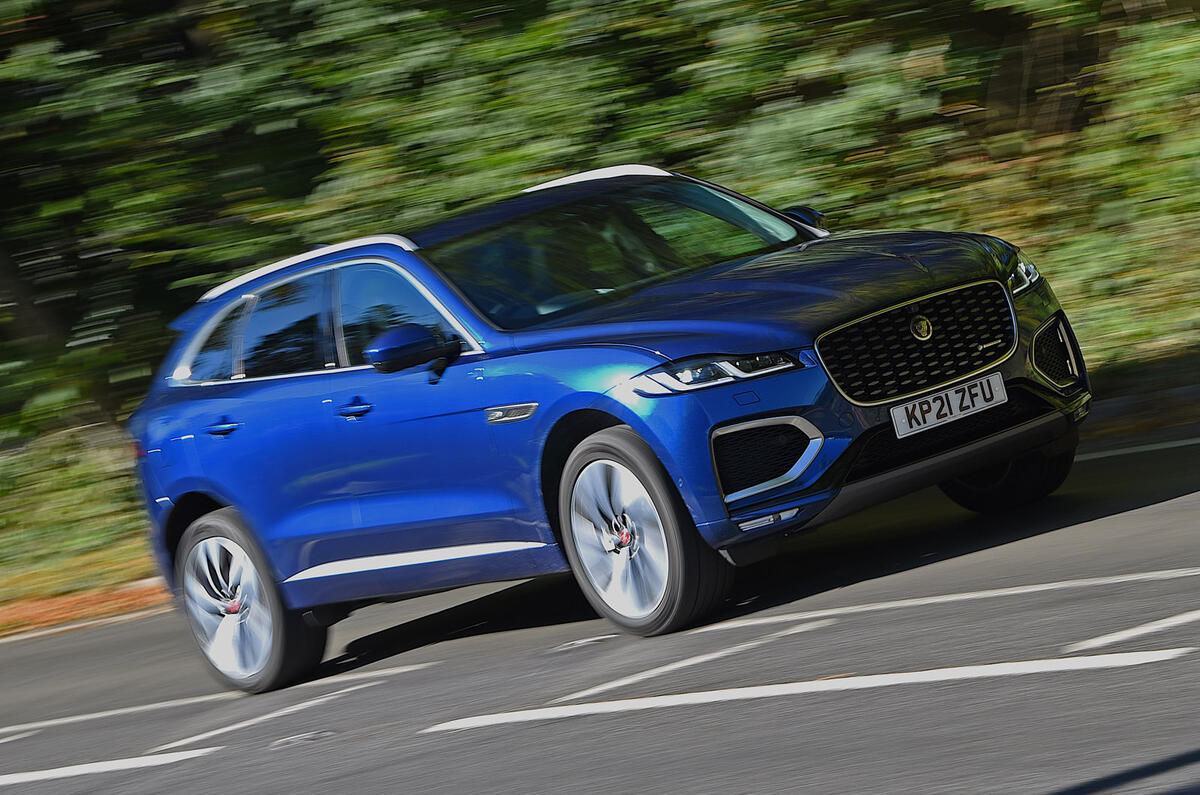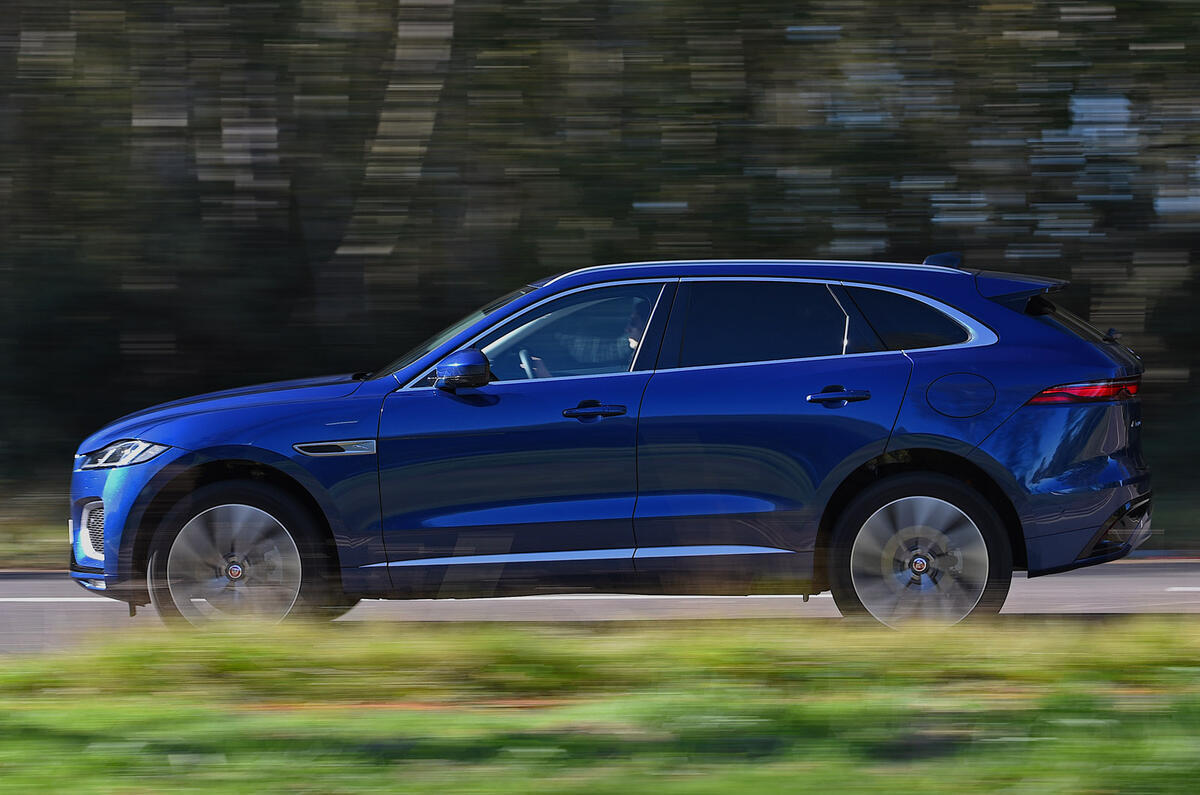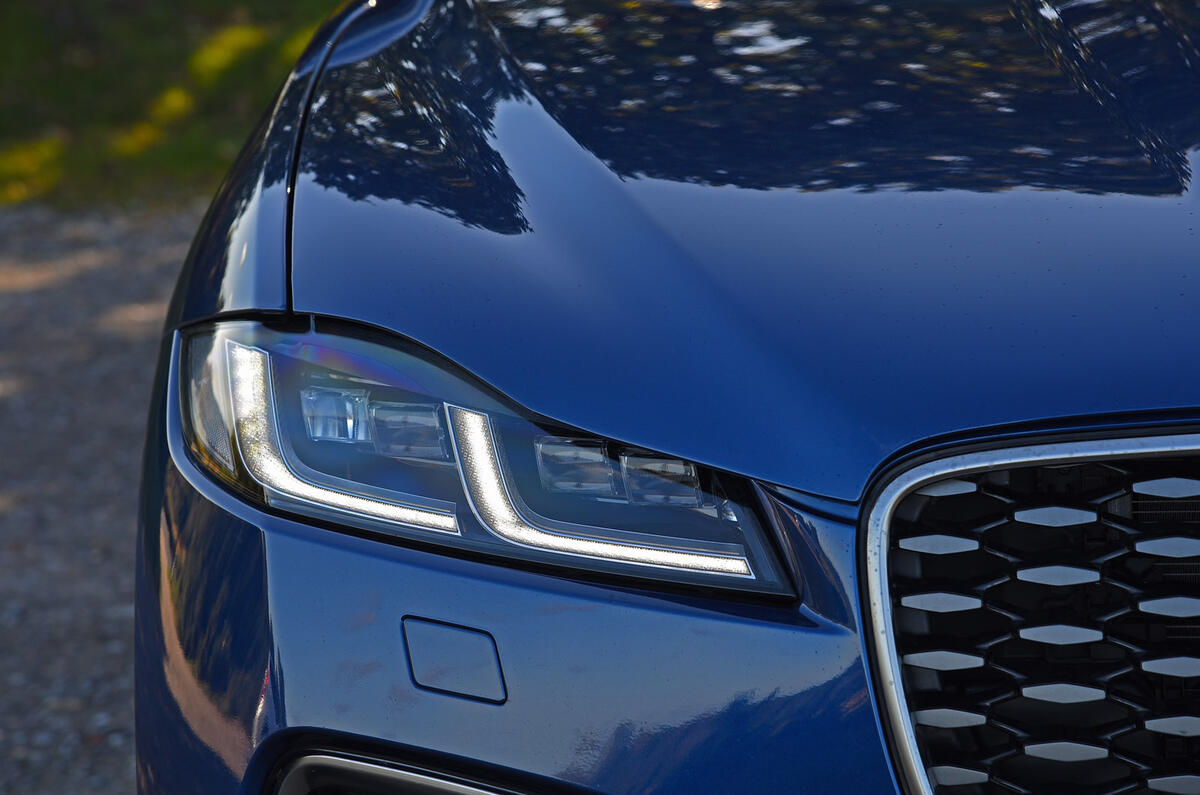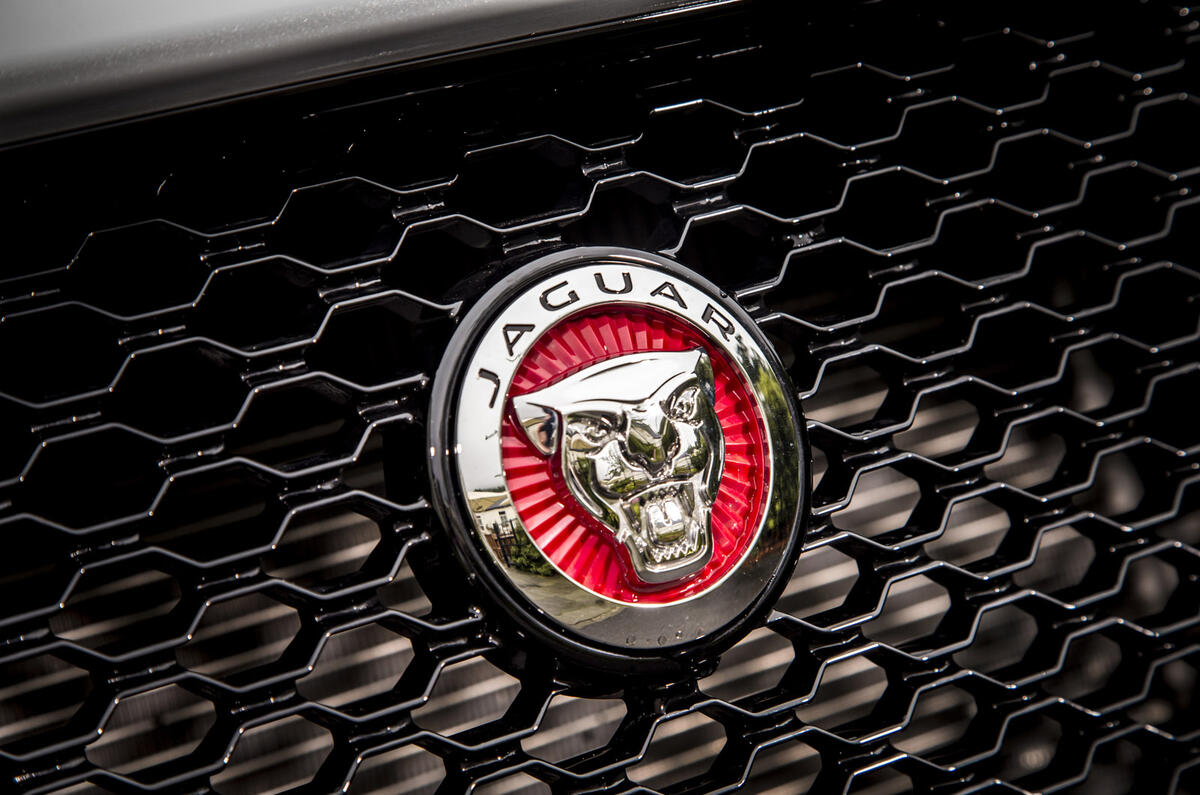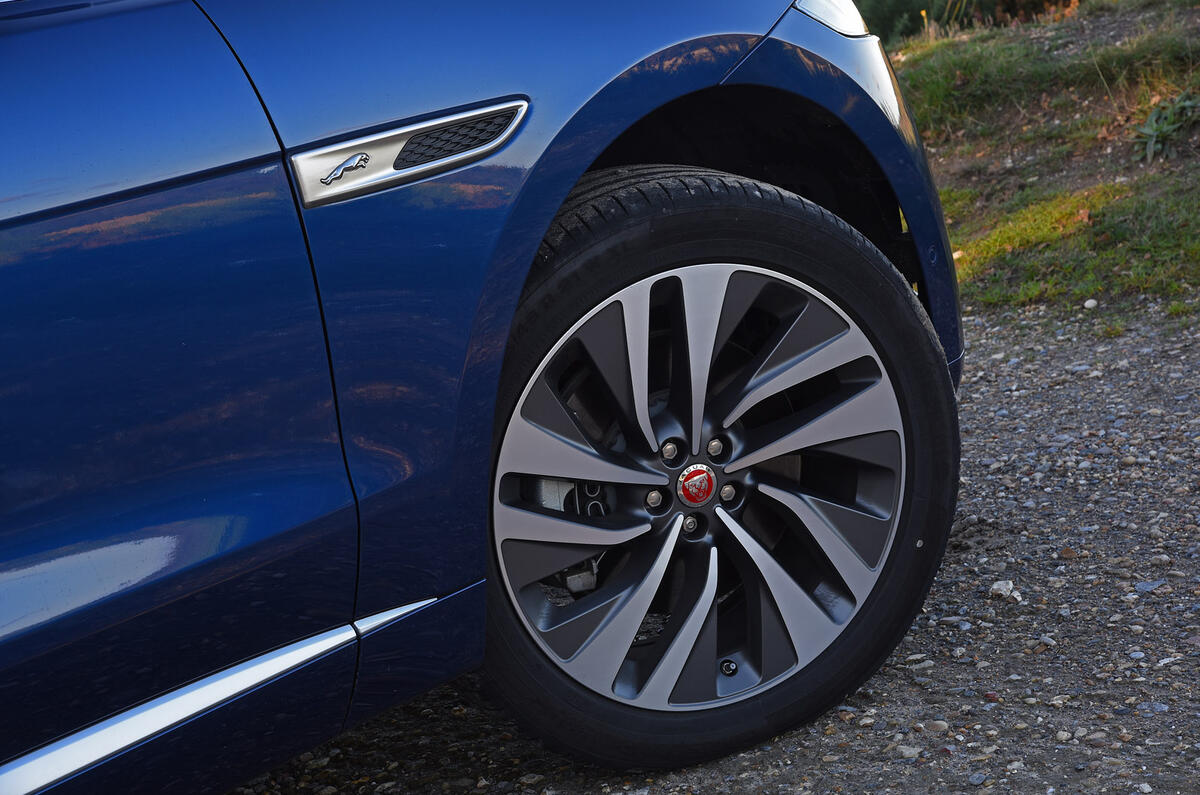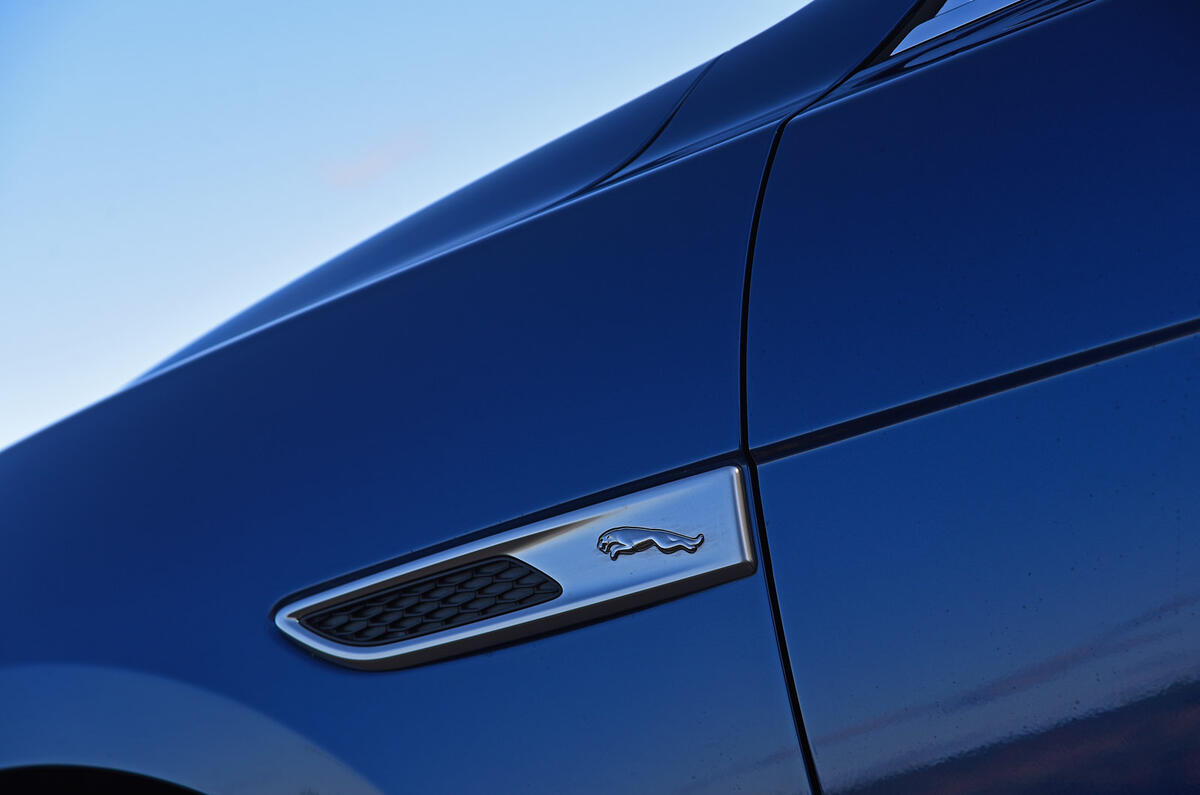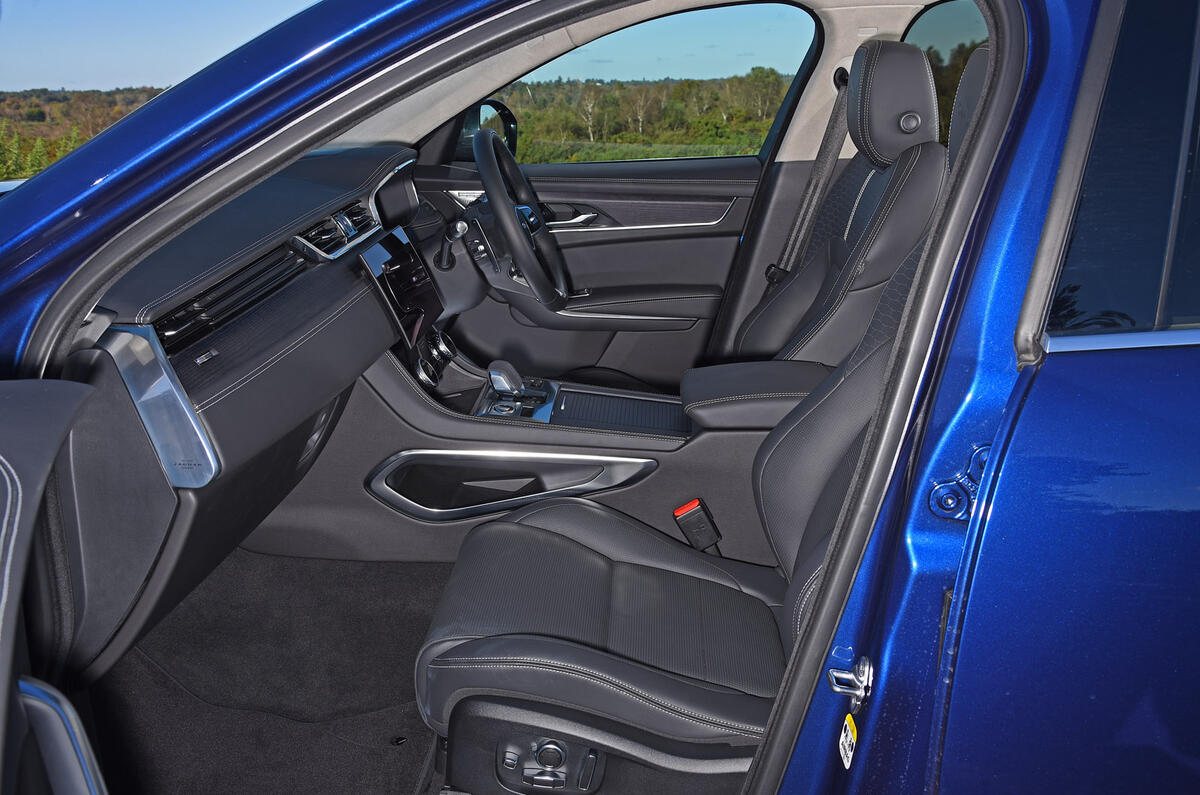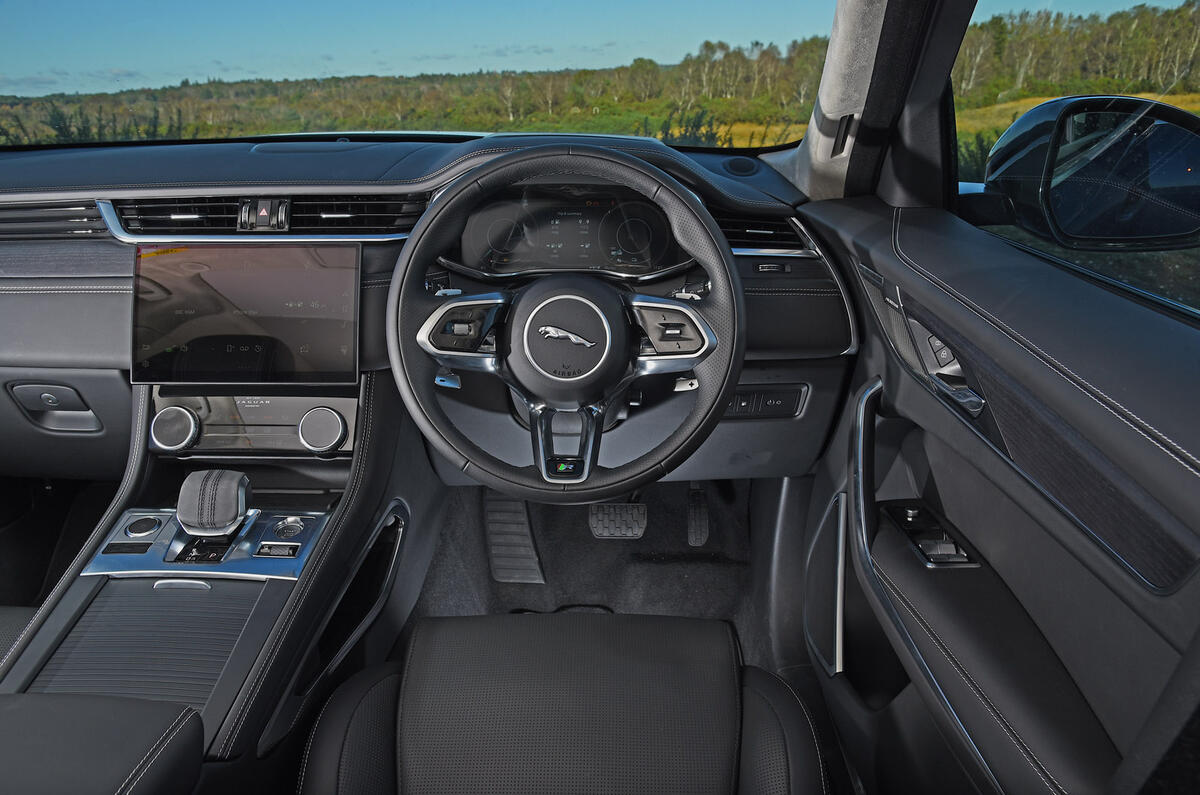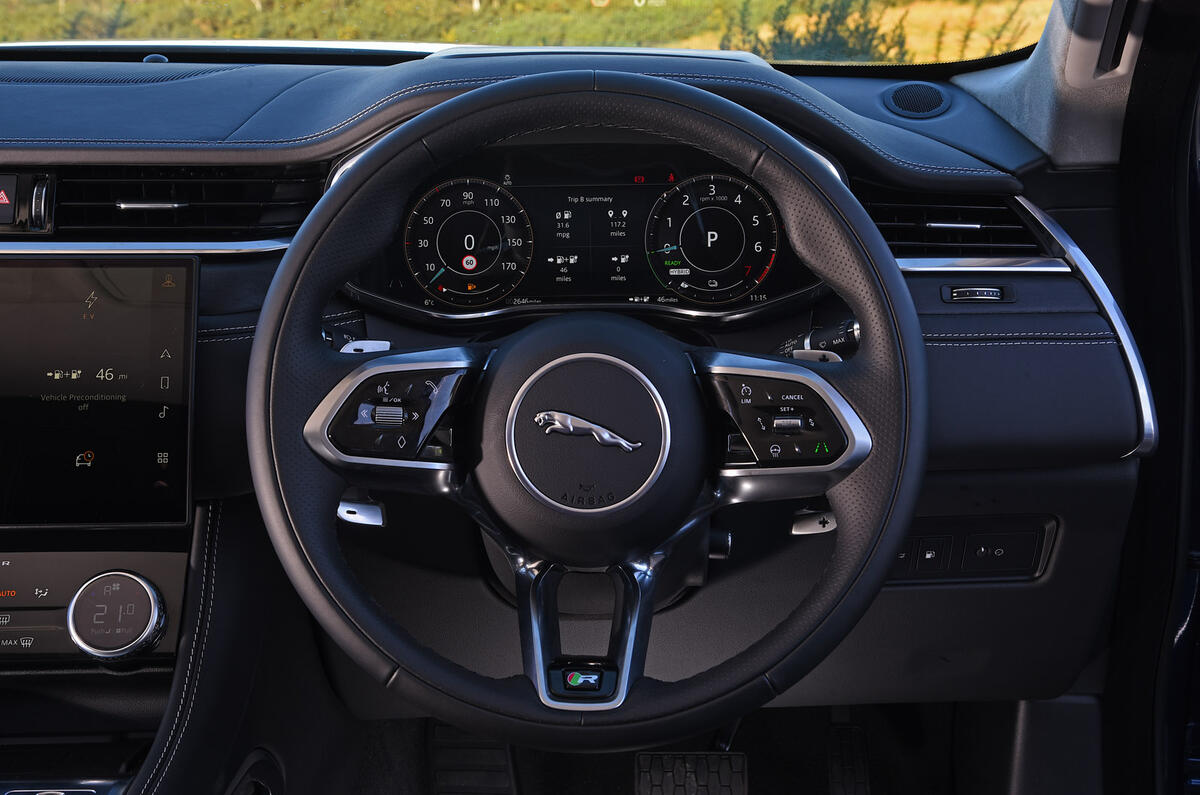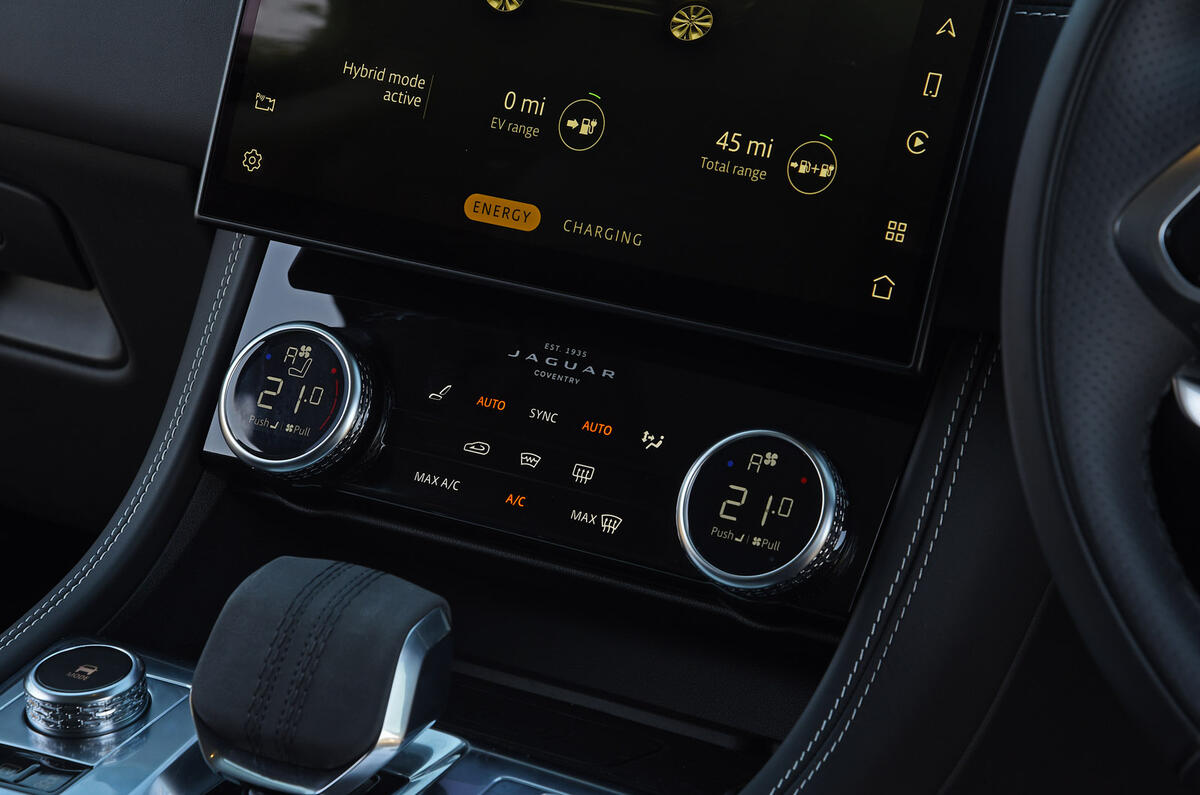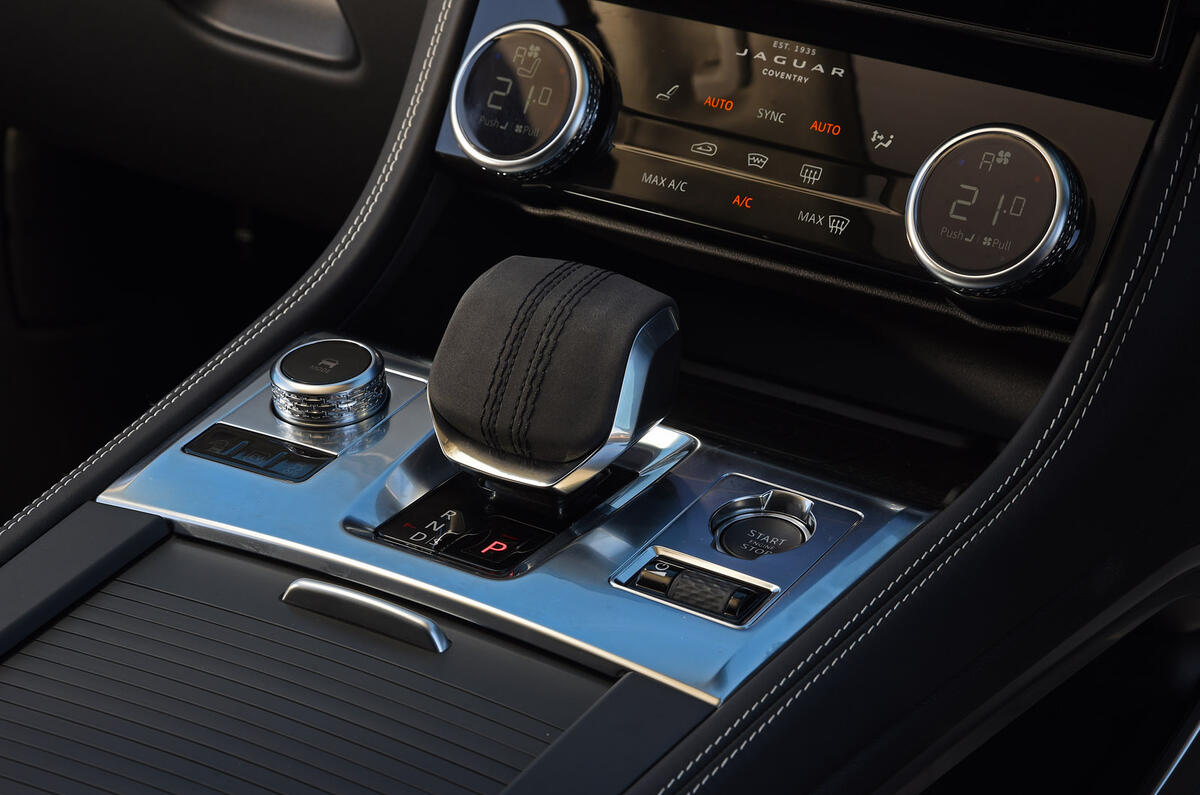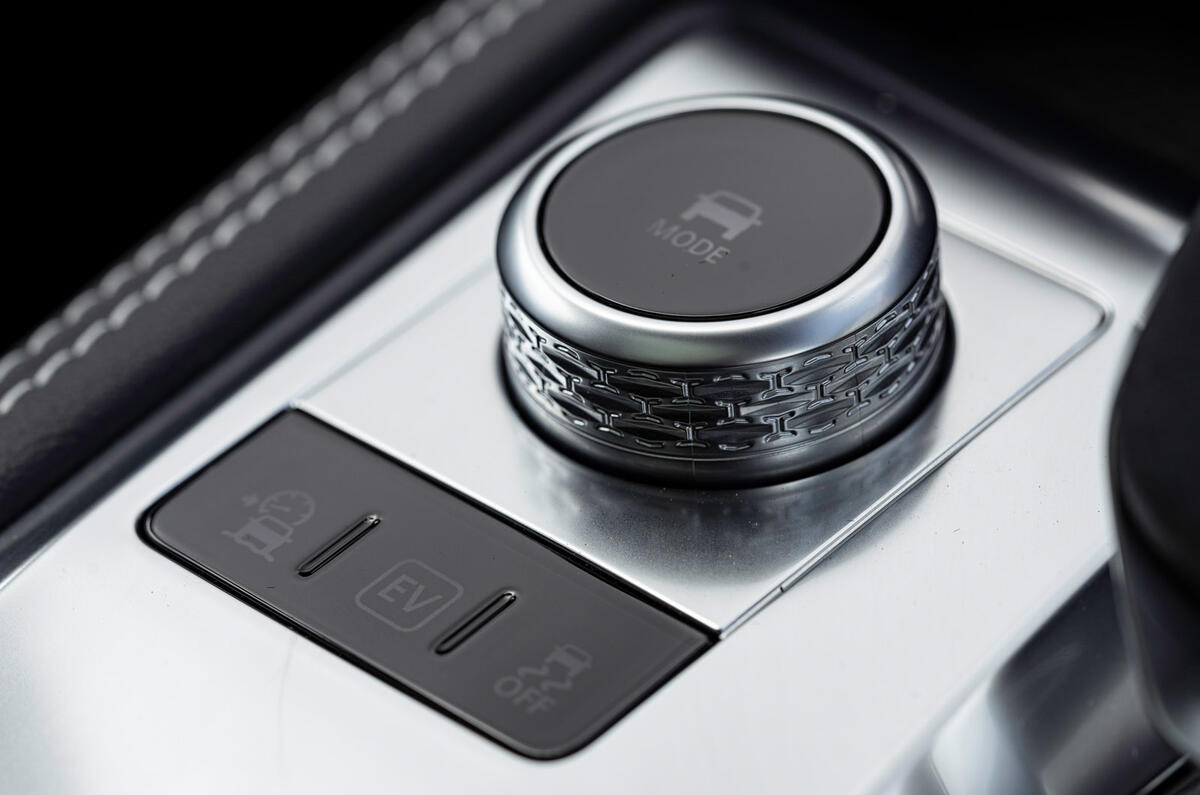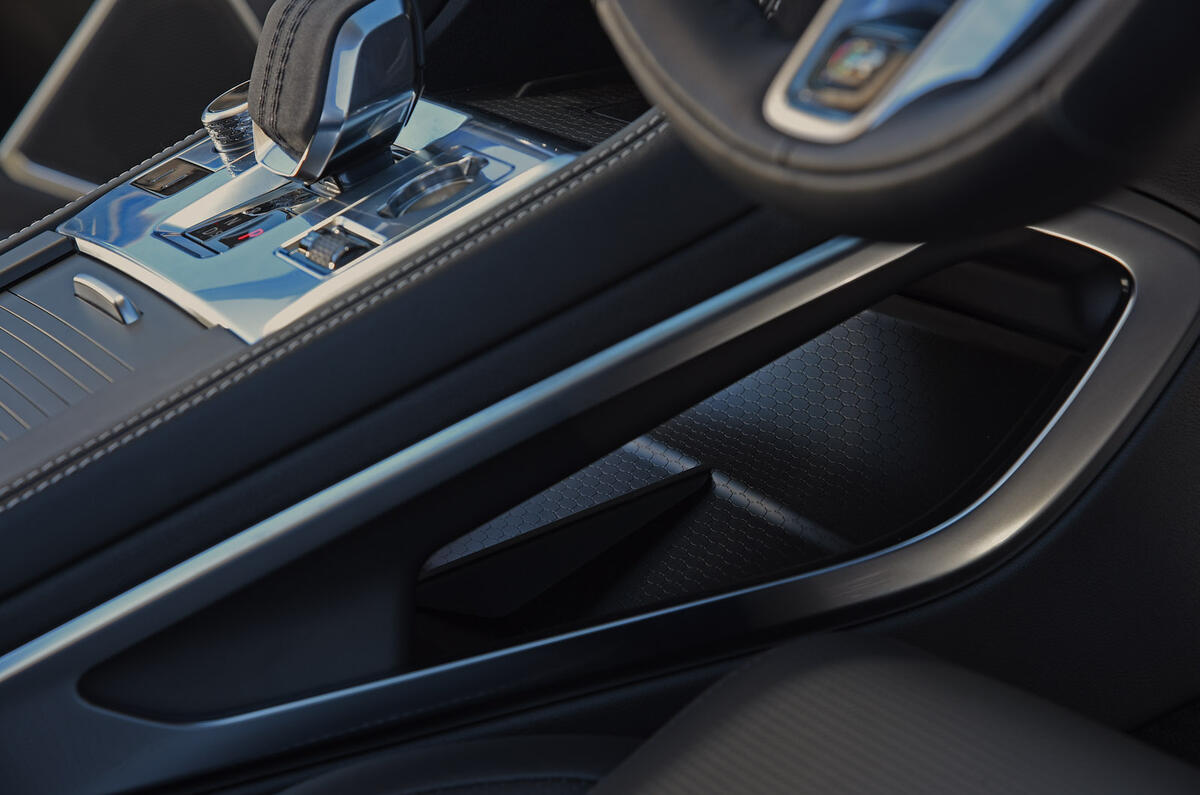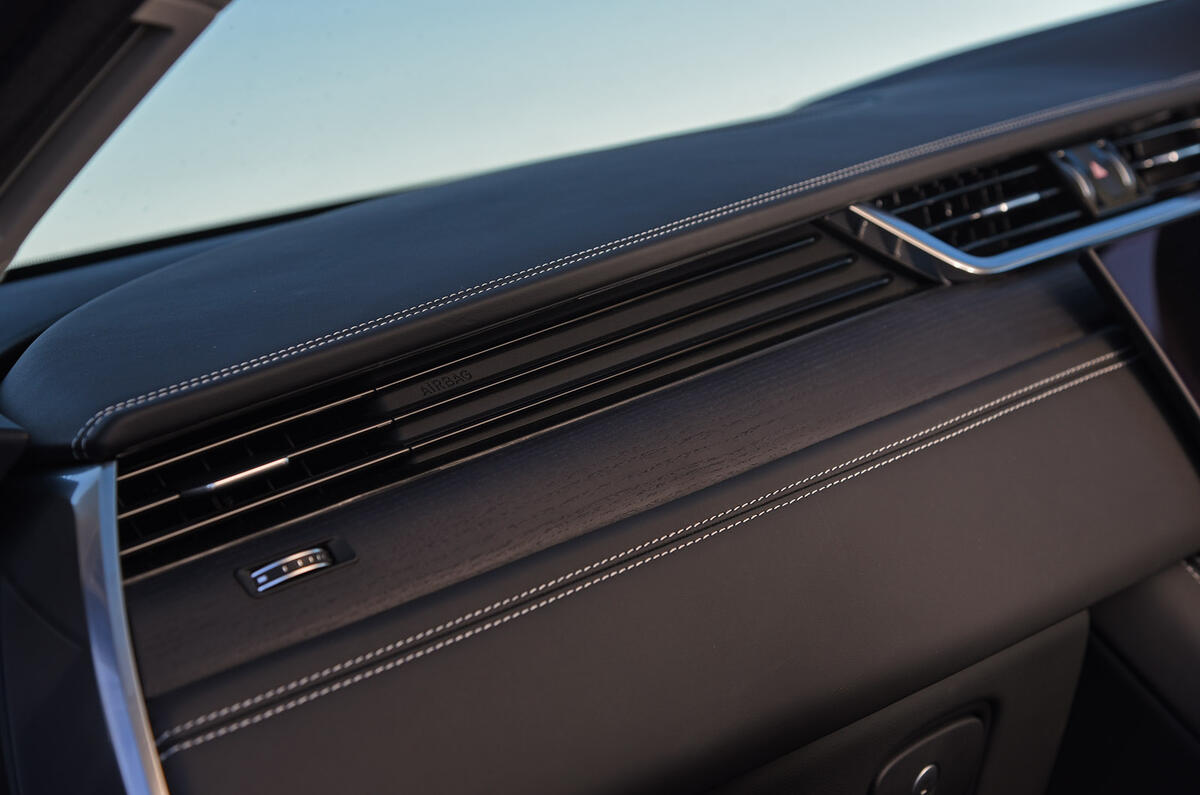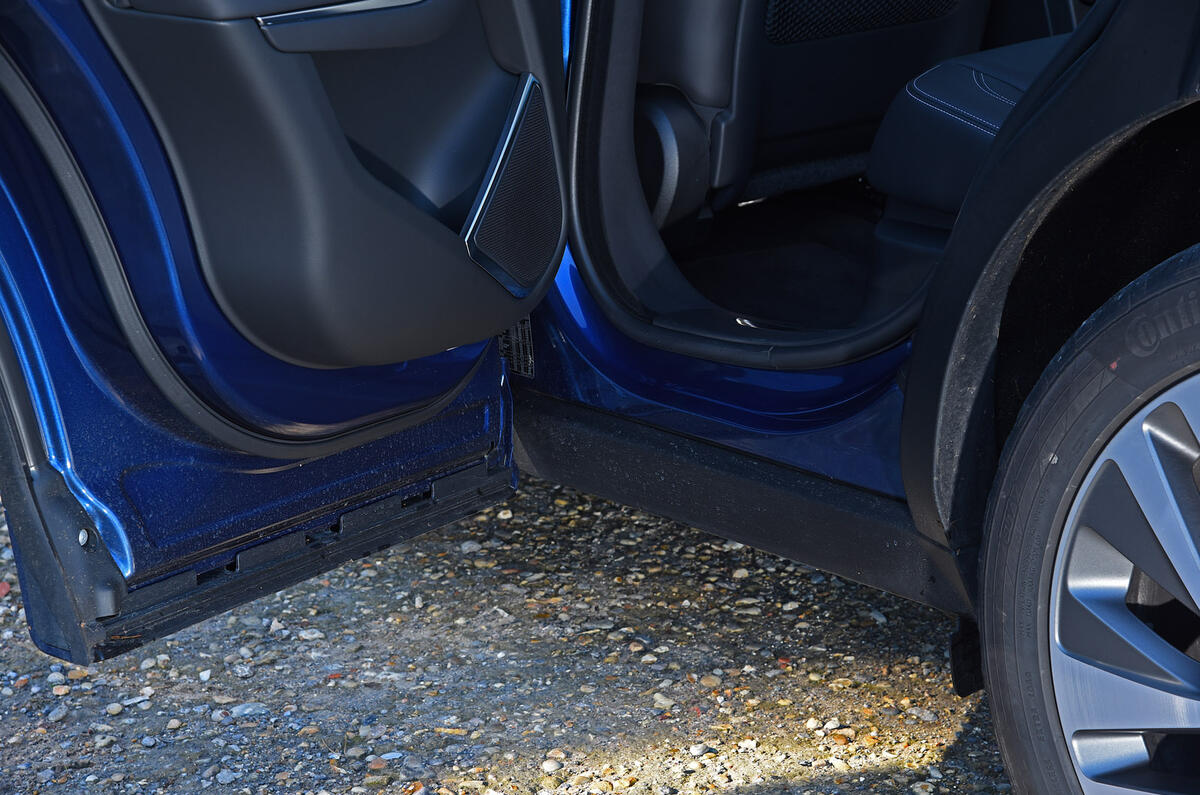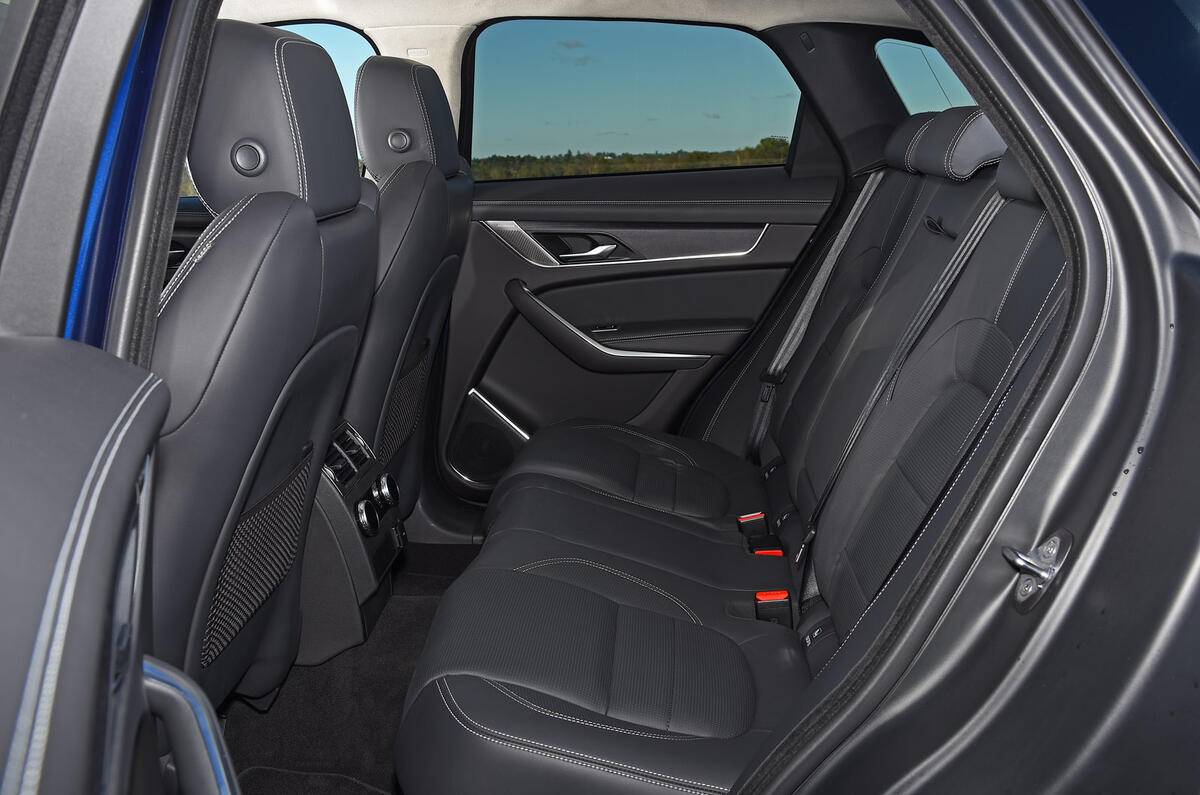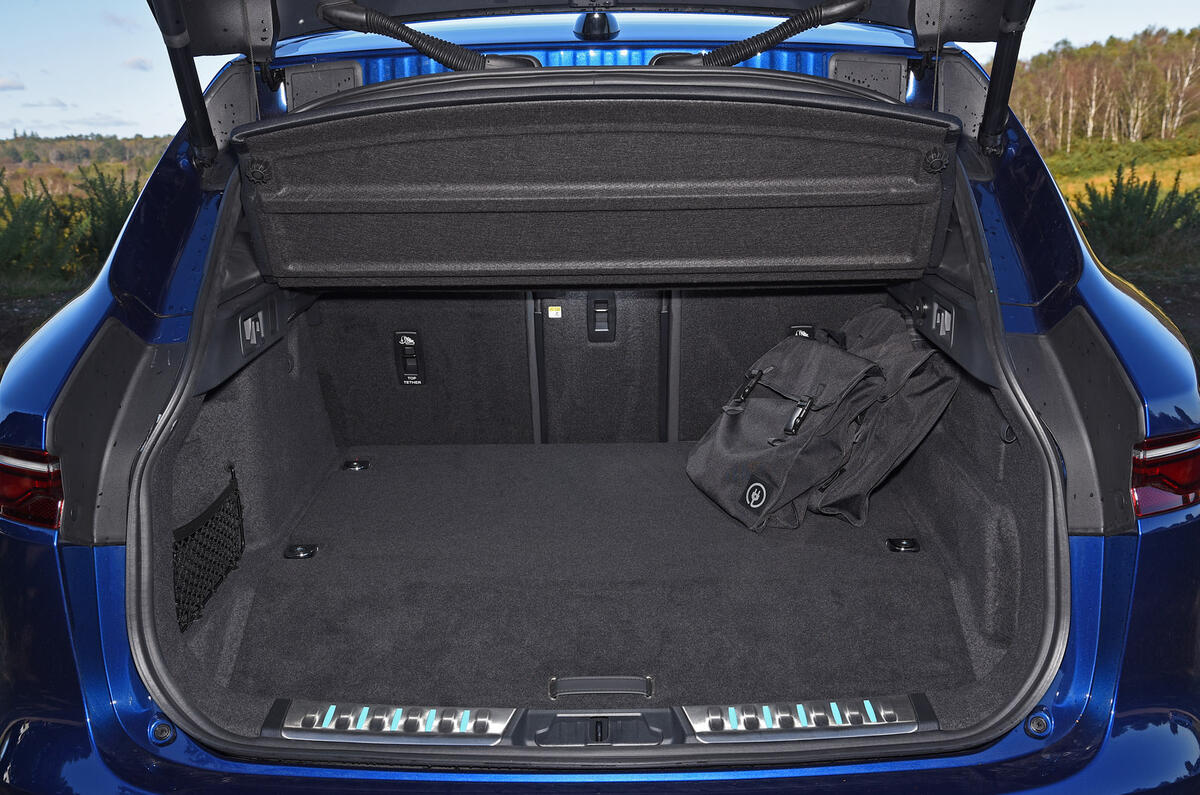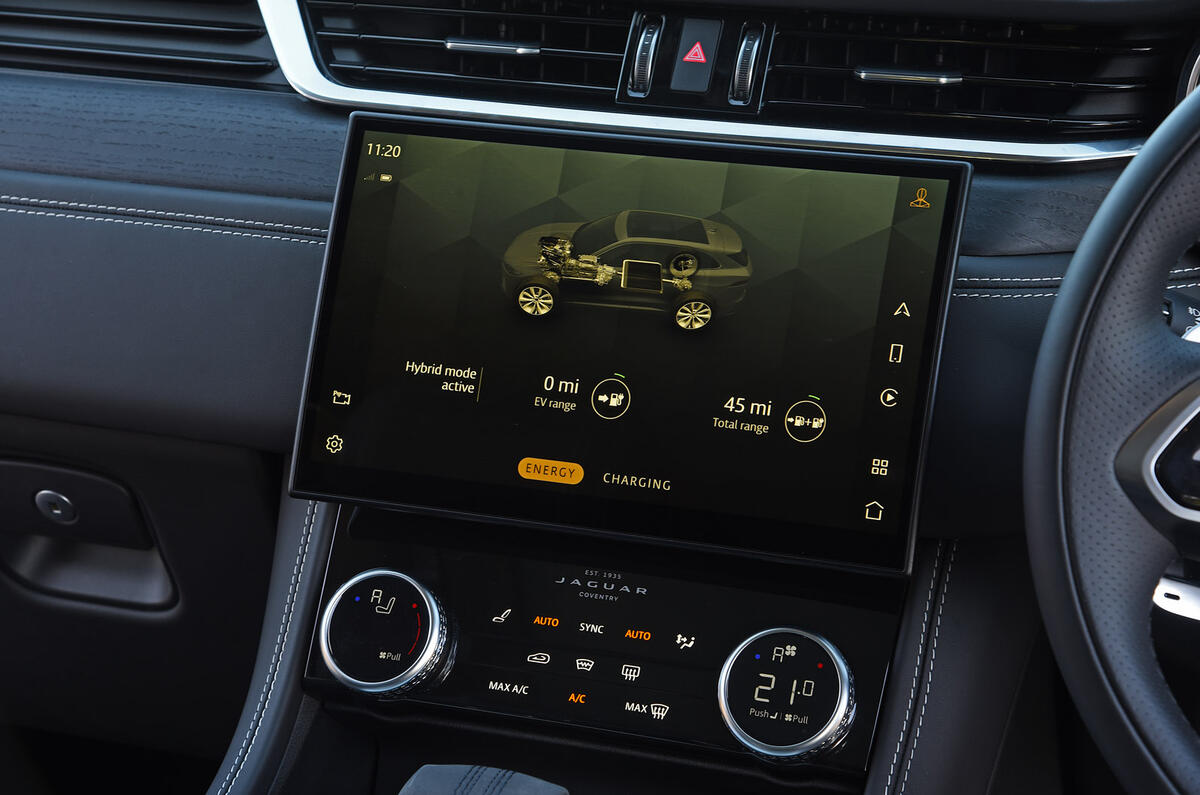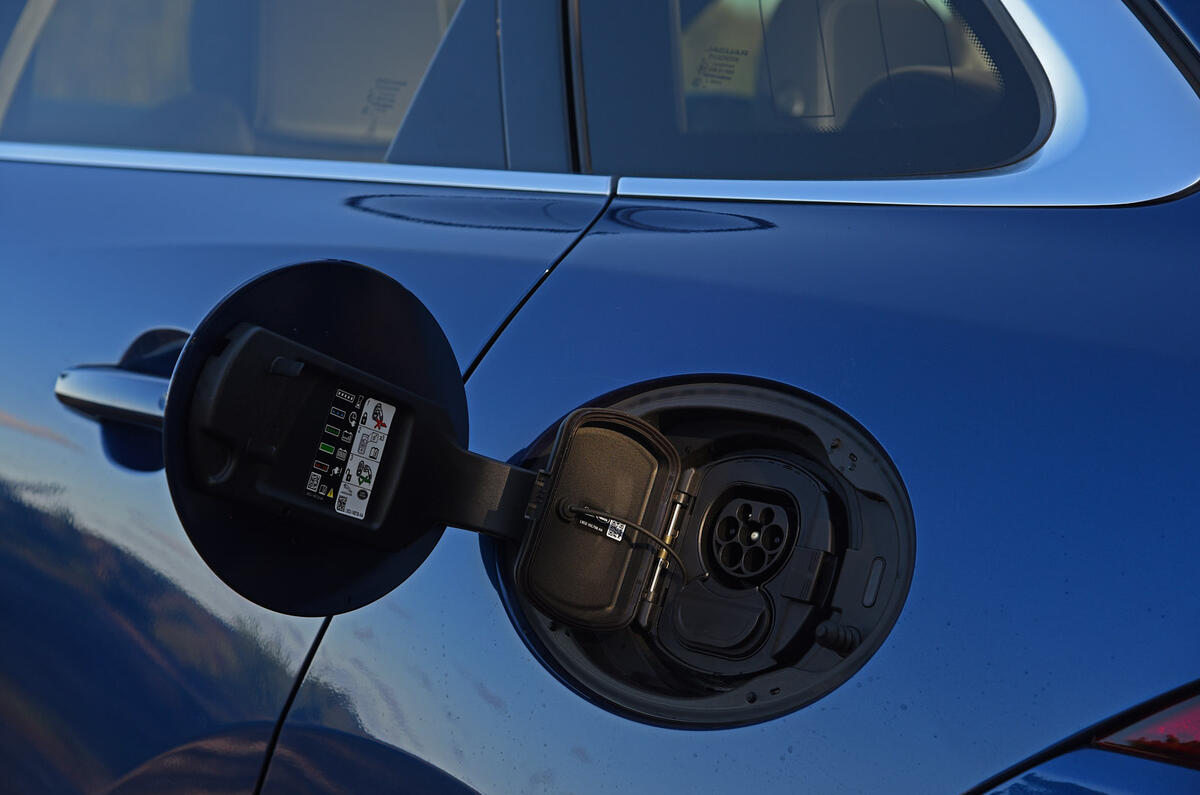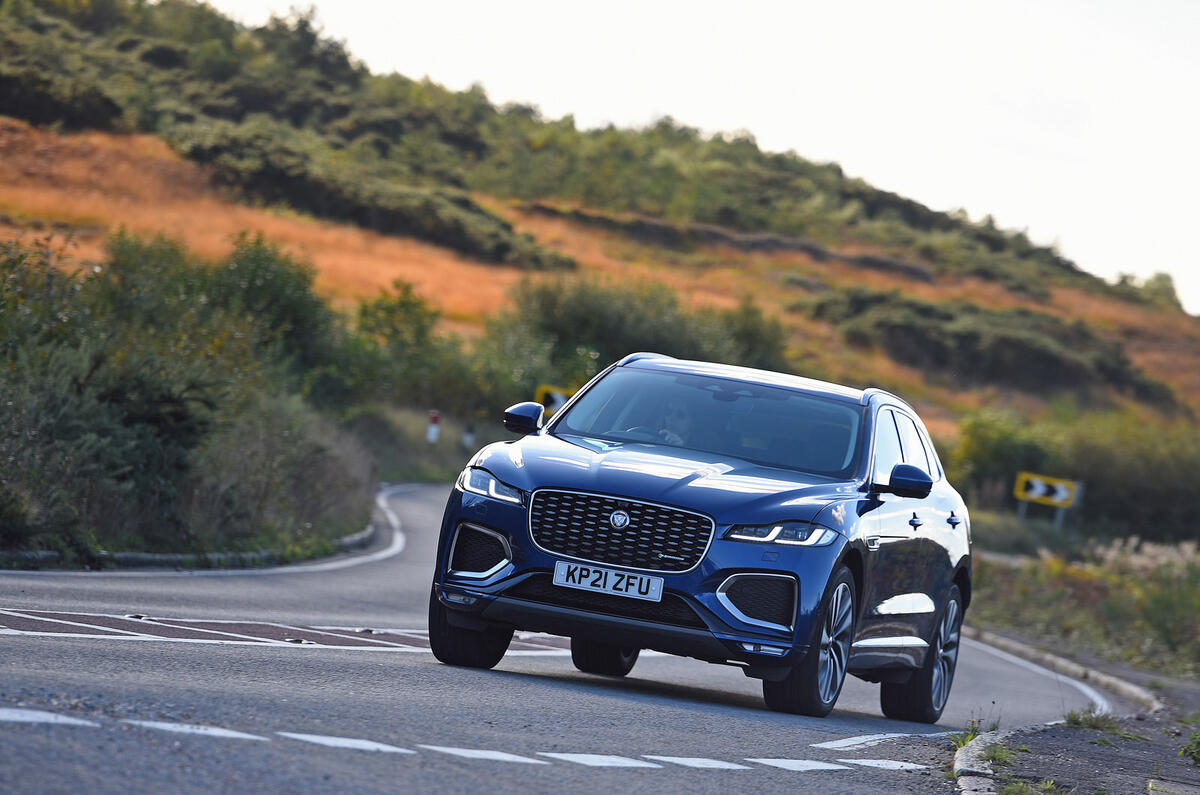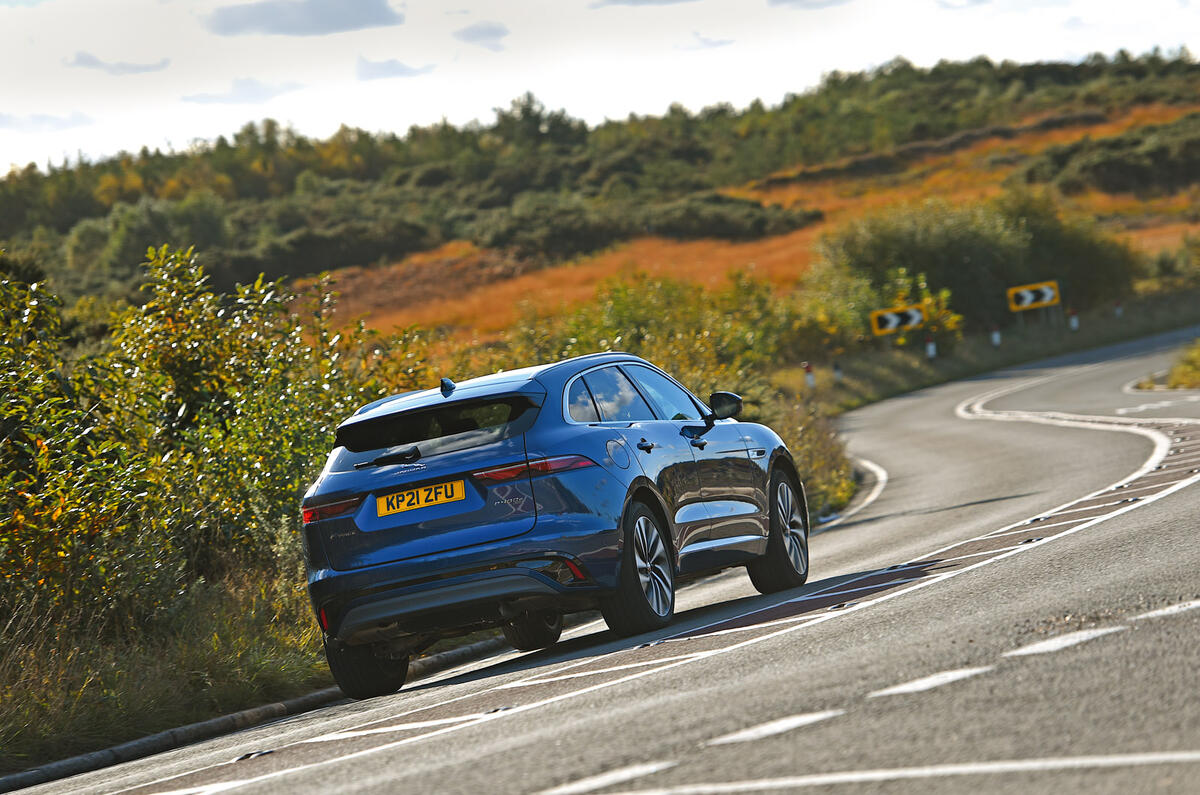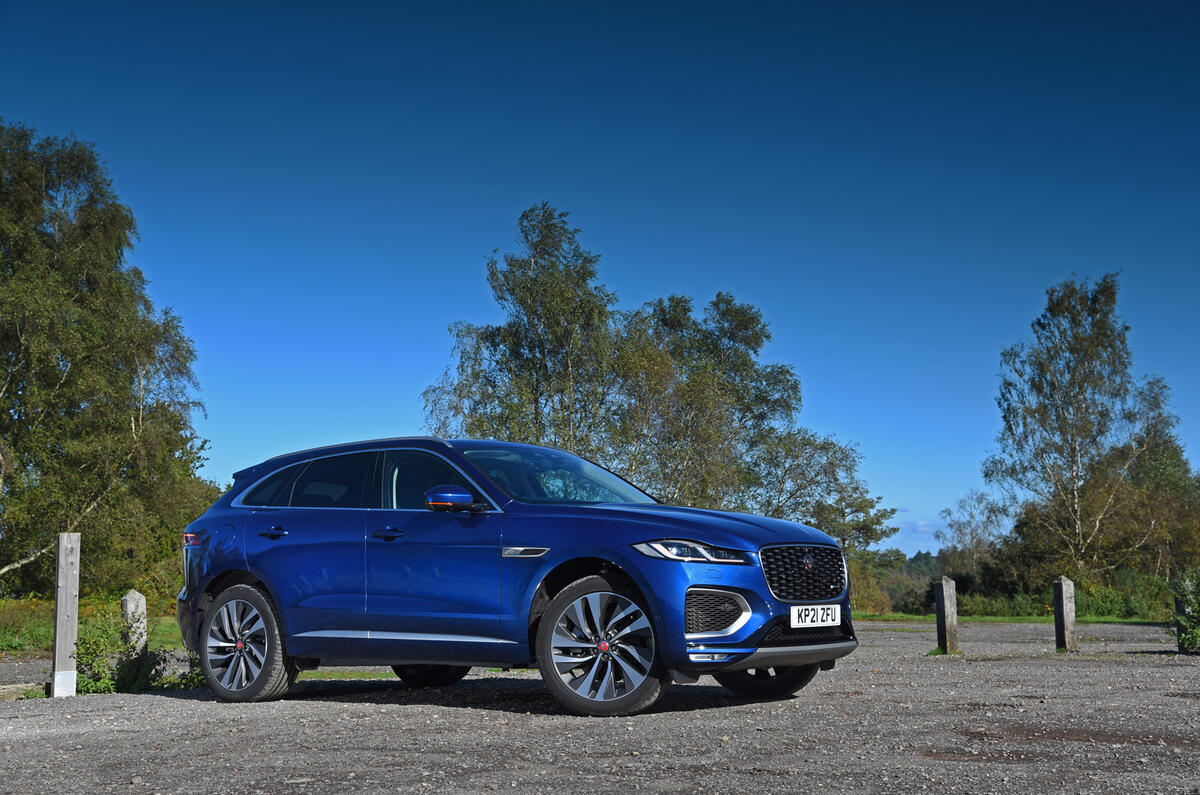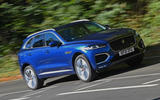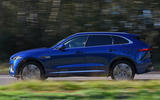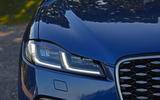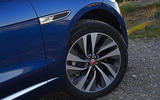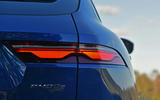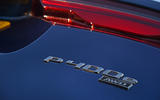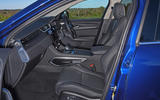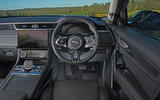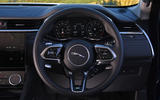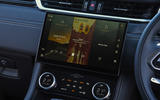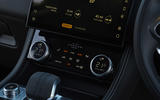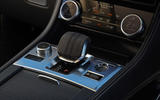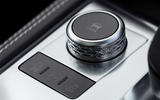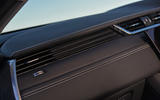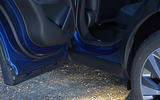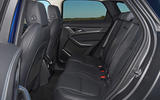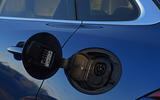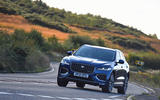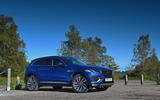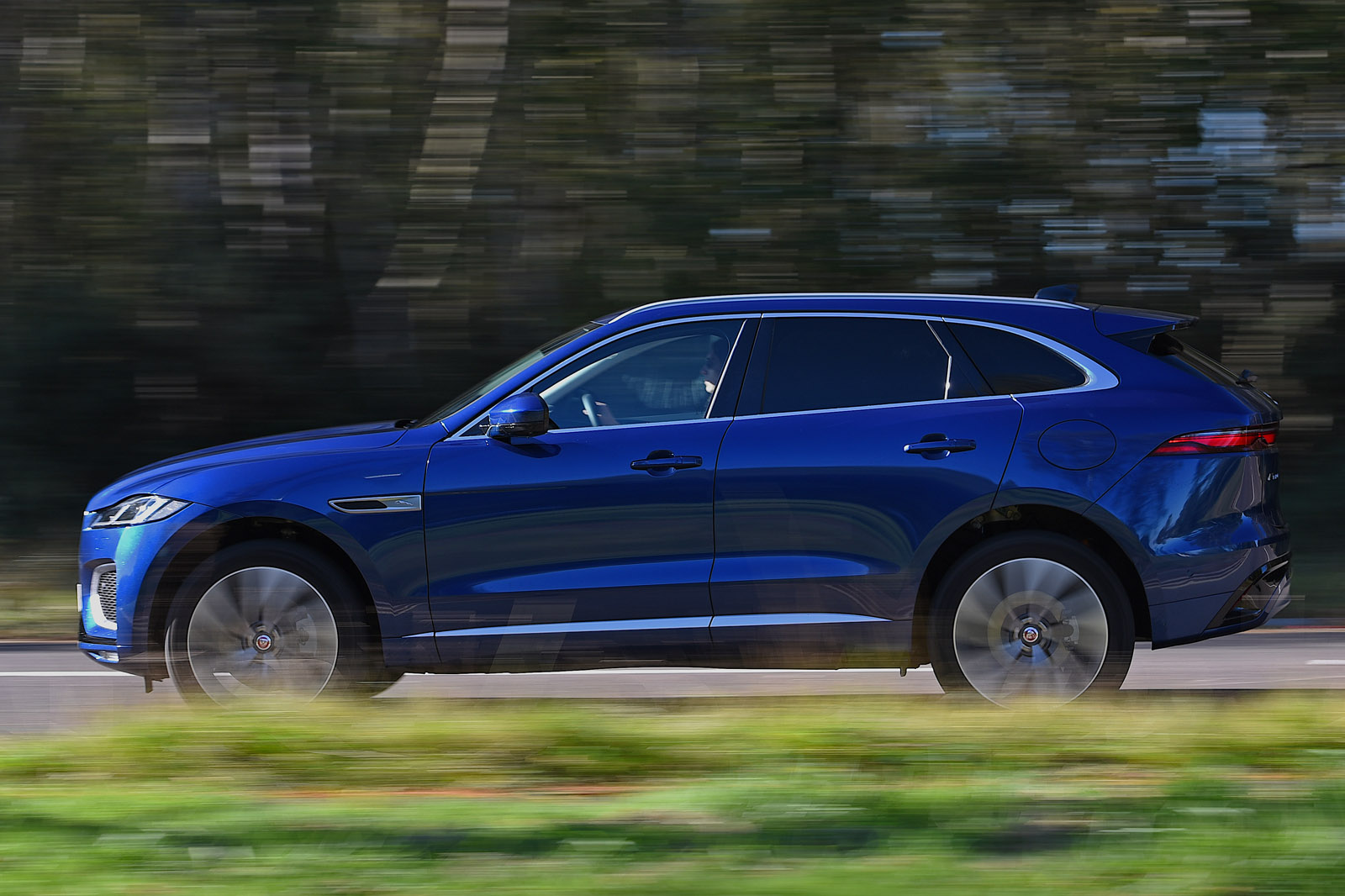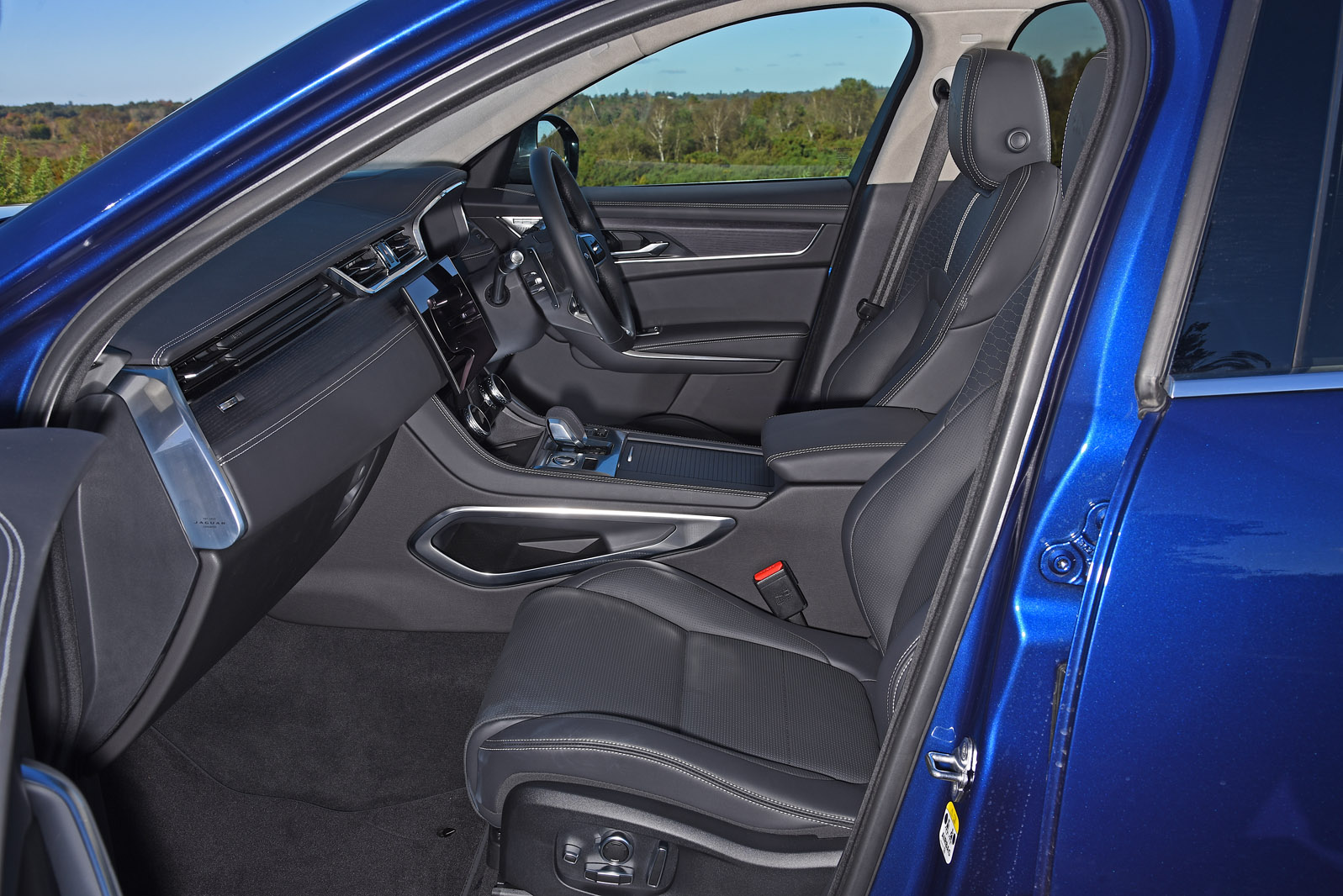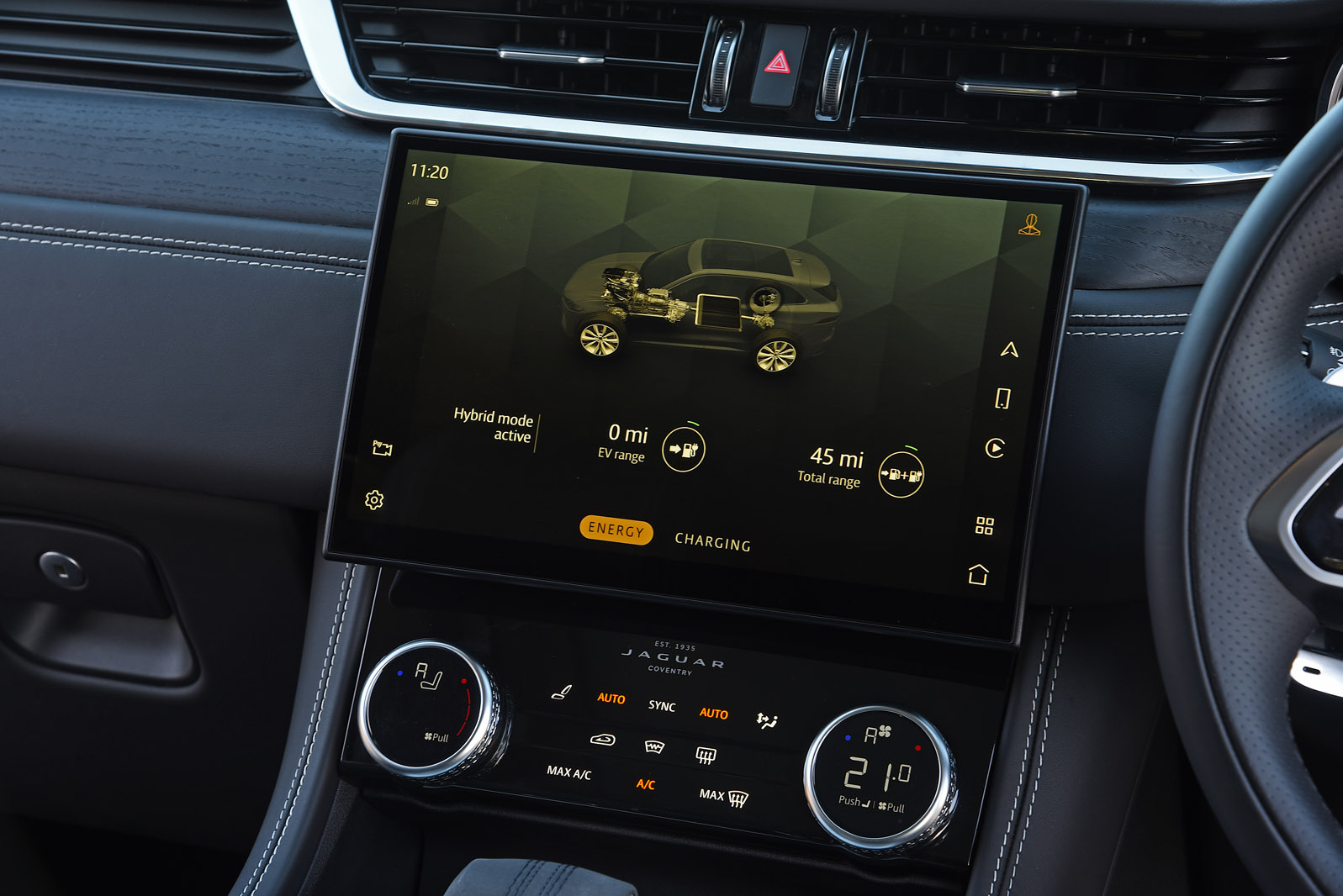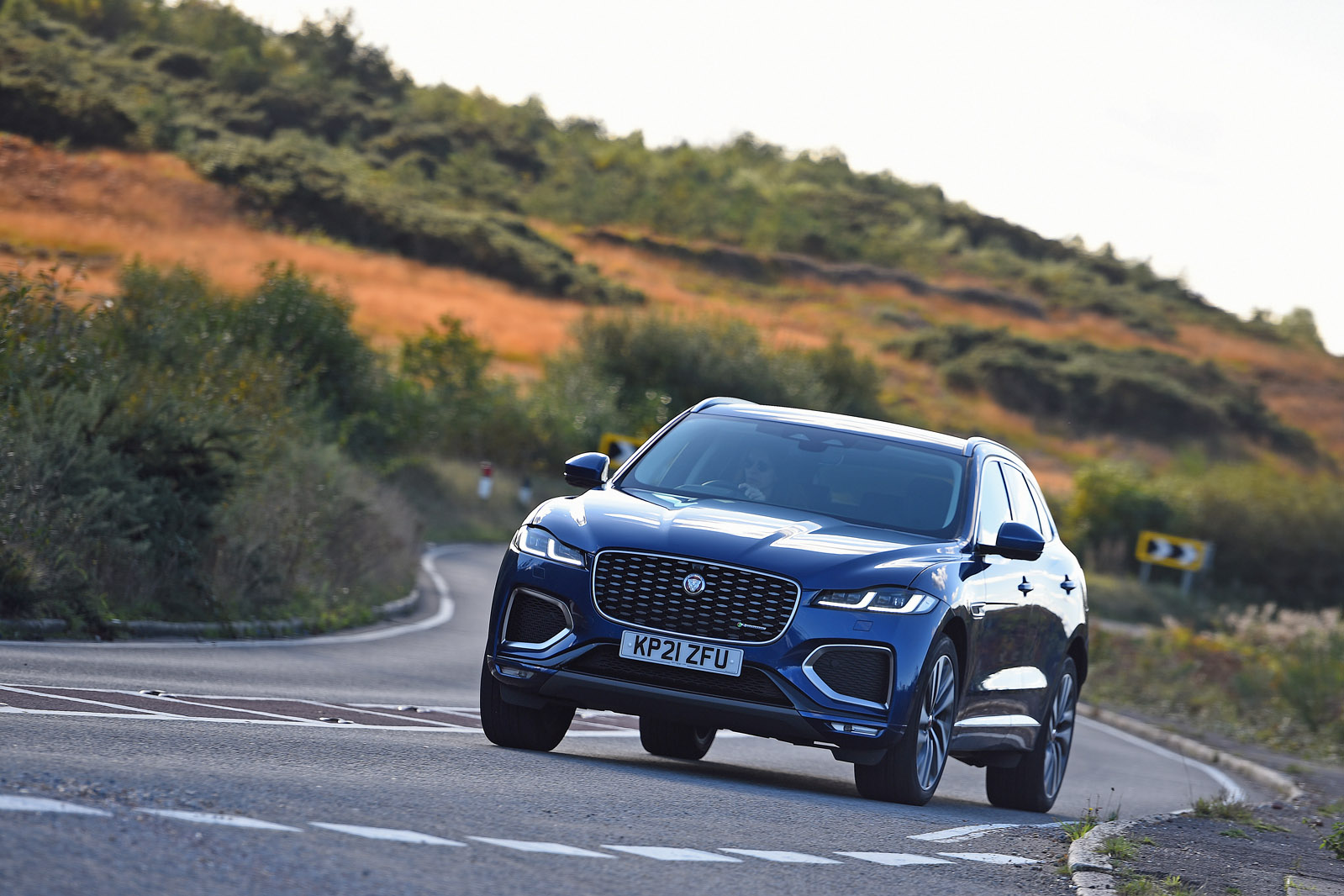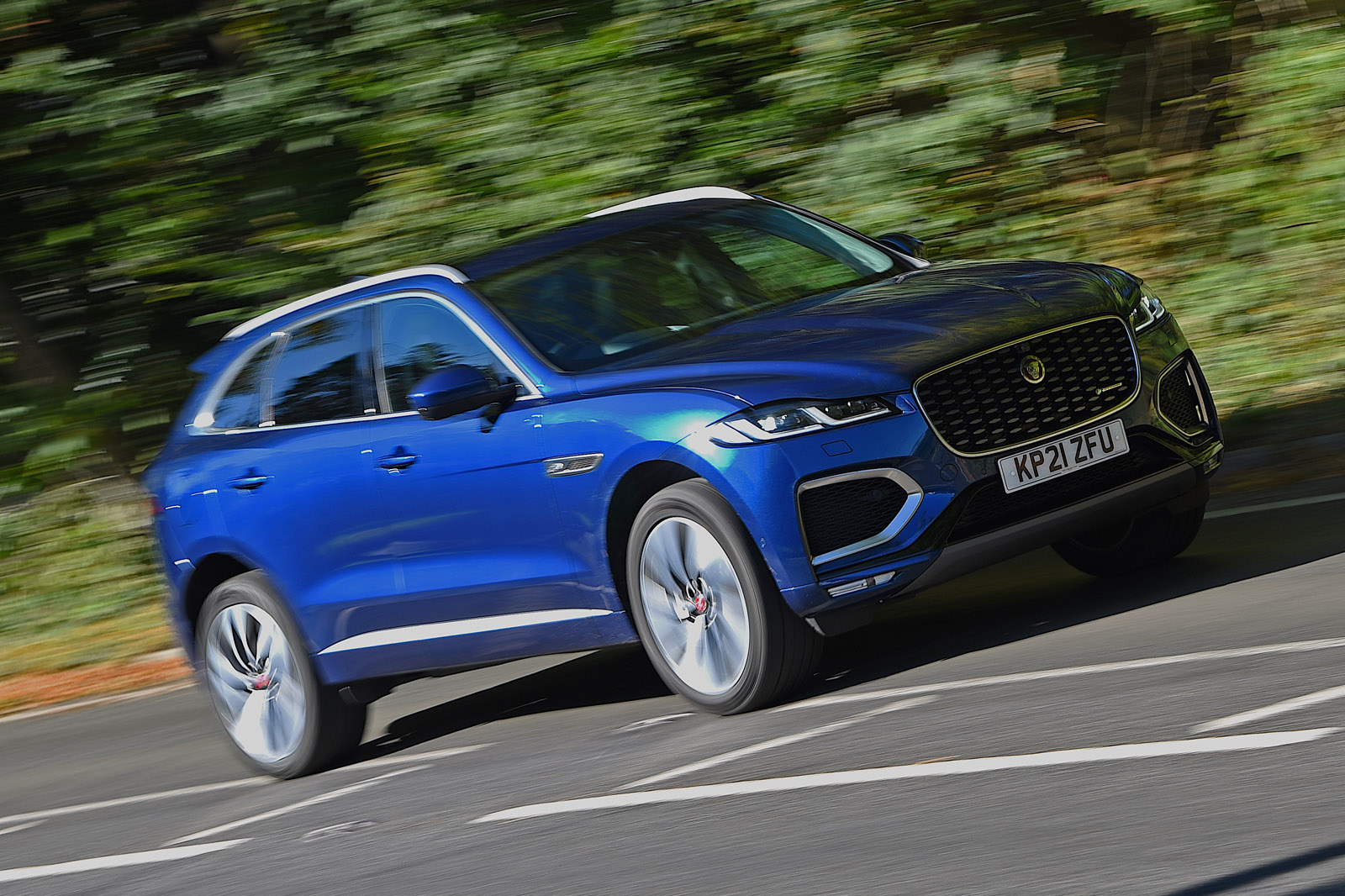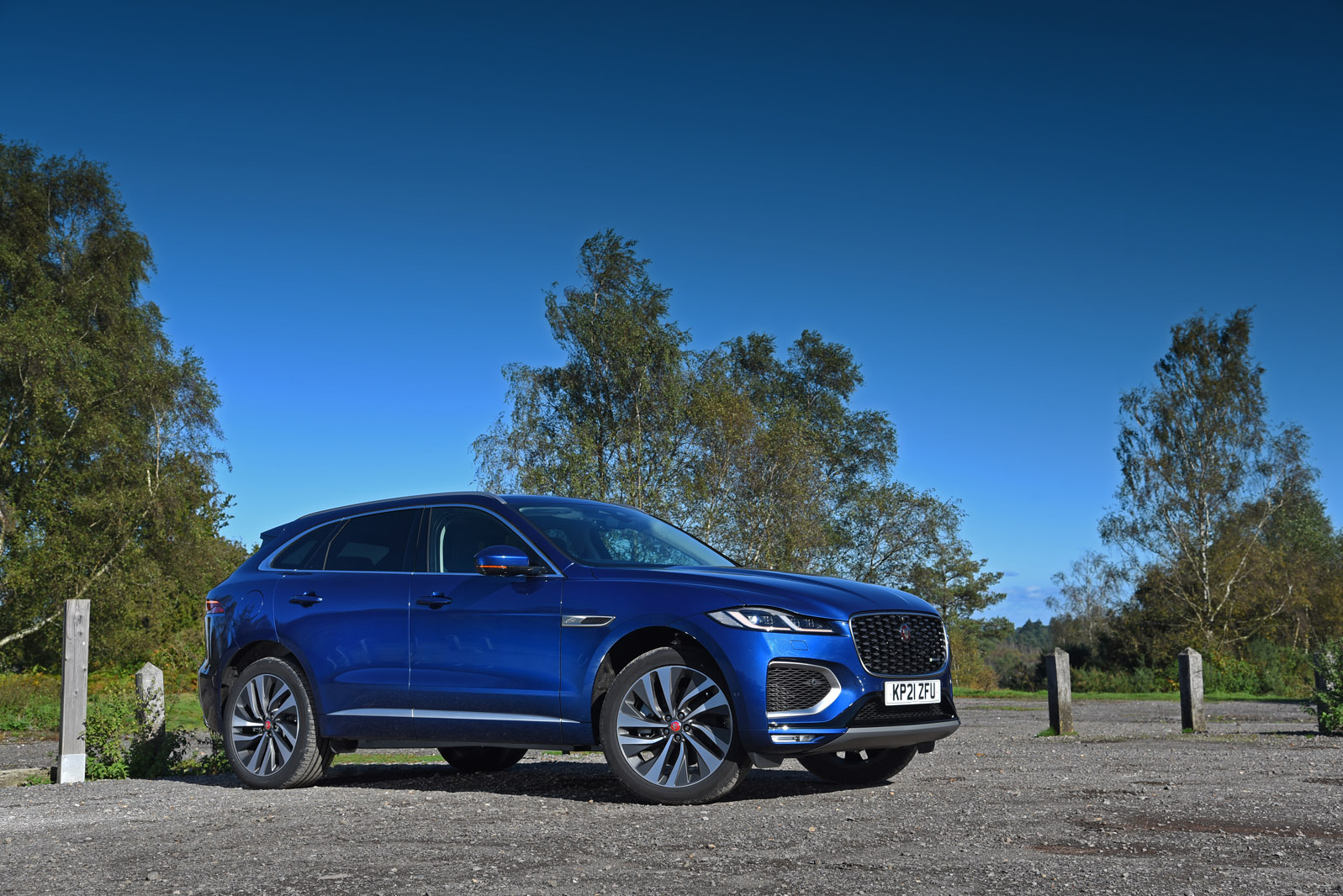Even in 2016, the F-Pace’s interior was one of its most significant weaknesses, with a slightly featureless design, so-so material quality and an infotainment system that was well off the pace. It’s not uncommon for a mid-life refresh to add a new multimedia system and light design tweaks but, in this case, Jaguar looks to have binned most of the old interior and started over.
On the evidence of our admittedly high-spec R-Dynamic HSE test car, that was the right decision, because when you step inside the refreshed F-Pace, it’s a world of difference – for the better. The design looks modern but classy, and perceived material quality is excellent across the board.
Practicality has been improved, too: the centre console’s phone-charging tray, decent-size armrest, cupholders, cubbies and ‘below-deck’ storage wouldn’t be out of place in an MPV.
The HVAC controls strike a nice balance between looking expensive and modern and offering easy usability. Controlling the temperature and fan speed, as well as the seat heating and ventilation, is done by turning, pulling and pushing two rotary controllers, while a touch-sensitive panel controls the other functions. The panel’s ‘buttons’ need a firm press to work, which is not ideal, but at least the temperature gets easily grabbed physical controls.
The F-Pace has always been positioned as a sporty SUV, in contrast to the increased focus on versatility, luxury and off-road capability in Land Rover products. As such, it’s surprising when you first climb aboard that the seating position feels so high. Although the seats are comfortable and have a wide range of adjustment, taller drivers may find that the steering wheel doesn’t offer quite enough telescoping adjustment for them. The sport seats lack a bit of lateral support for faster cornering, but more heavily bolstered ‘Performance’ seats are a no-cost option. Space in the rear is competitive for the segment.
That the F-Pace was not originally designed as a plug-in hybrid takes its toll in the boot. Almost the whole floor is raised to accommodate the battery and, as a result, the P400e has 128 litres less boot space than other versions. The way the battery pack has been integrated could have been done more neatly as well, although it’s not as bad as the massive step you get in some Mercedes models. The floor is mostly flat but slopes down in the last 30cm towards the opening. Although that means it starts level with the tailgate opening, it’s unfortunate that it could almost have been designed to automatically eject smaller loose items, soft bags, footballs and the like, so you sometimes find yourself in a race to close the bootlid before cargo escapes.
Jaguar F-Pace infotainment and sat-nav
Although the name Pivi Pro sounds so cutesy that it might even have been devised by some teenage YouTuber, it marks Jaguar finally getting infotainment right.
The company’s old systems had a habit of becoming confusing and laggy, especially while mirroring your smartphone, but while this new one’s layout is slightly quirky and takes some getting used to, it works quickly and logically. Wherever you are, you can swipe right for settings, and there are always shortcuts to your navigation, media and phone projection. The home screen’s three-tiered design offers further quick adjustments, too. The high-resolution display is large, responsive and not perched high on the dashboard like an iPad. Its graphics are classy, crisp and original-looking.
Wireless Apple CarPlay and Android Auto are supposed to be coming to the F-Pace at a later date, but we had to run a cable to the armrest cubby. The built-in navigation also had trouble connecting to traffic data and doesn’t offer much in the way of alternative routes.


